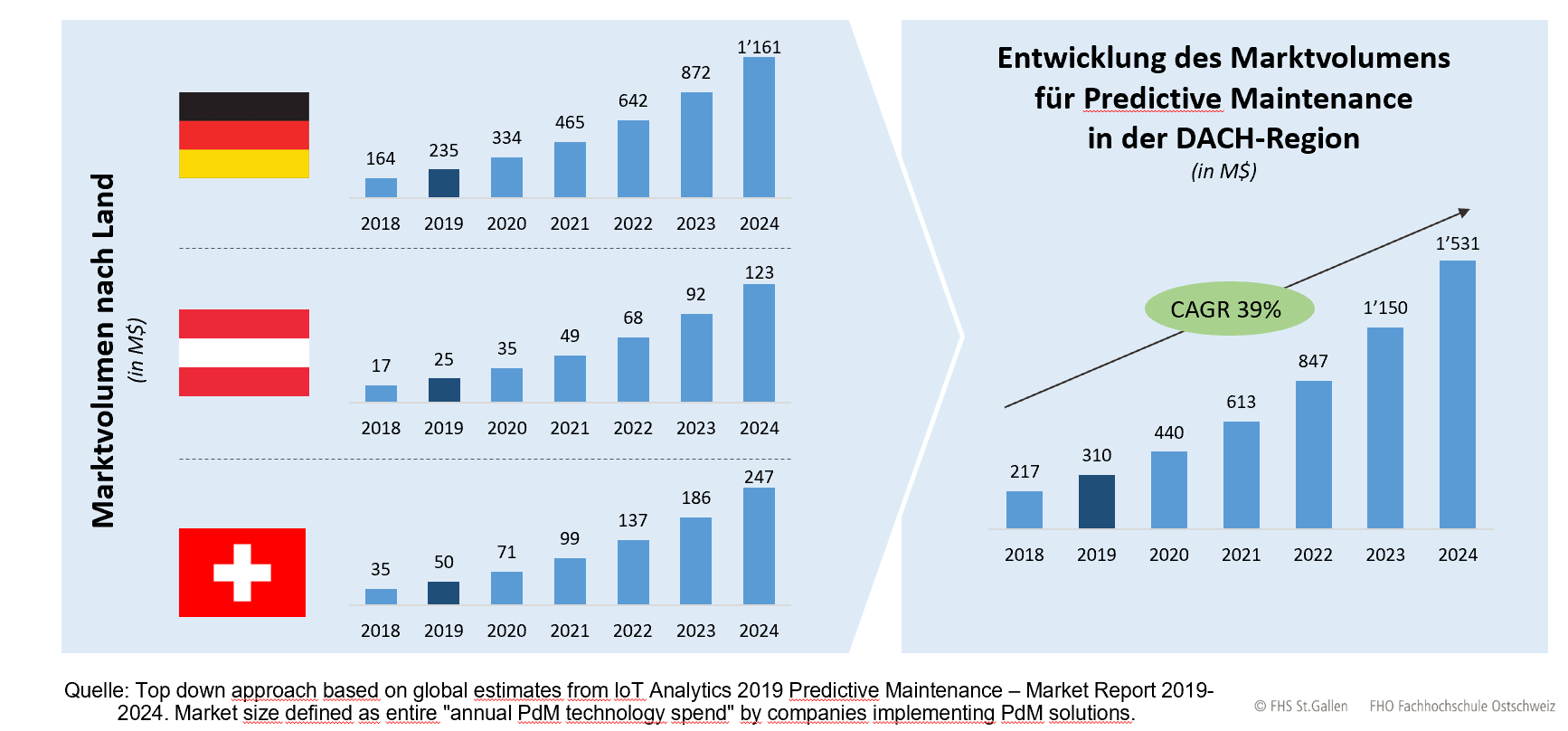What worries maintenance managers. Fmpro Round Table of maintenance managers - Digital Retrofit

On June 26th 2019, LeanBI, in cooperation with the company OST, was invited to present at the fmpro Round Table on the topic of “Digital Retrofit of Systems”. In addition to our presentation with many use cases, the joint discussion at the Round Table was of great importance. We summarize the outcome and report on what worries the maintenance managers of large companies.
Fmpro is Switzerland’s largest association in the field of facility management and maintenance. Its aim is to support education, know-how transfer and networking in the industry. In this context, fmpro organizes round tables on the subject of maintenance. The maintenance managers of selected companies such as DSM, BASF, Comet, ABB, Migros, Bilfinger, Nestle, Axpo, Post CH and Altran were invited to the “Digital Retrofit of Plants” event to share their opinions.
Digital retrofitting is a major topic in the industry, and particularly predictive maintenance in this context. The market volume in Switzerland is estimated to reach $247 million within 5 years, five times higher than this year (see chart). A good enough reason for maintenance managers to keep dealing with this topic again and again.

Yvan Jacquard, CEO of OST, and Marc Tesch, CEO of LeanBI, demonstrated how predictive maintenance is approached in the industry in their keynote speech and underpinned this with 3 use cases. In summary, the following 3 points are crucial for a successful retrofit of logistics and production facilities:
- Choose a broad IoT approach, but start small
- If available, use “Out of the Box” solutions, in combination with AI and sensor technology
- Staggered implementation: benefit/cost/feasibility oriented – few risks and better performance
Our central focus in this blog is the point of view of the maintenance managers, because these well-known and experienced people seem to be rather cautious towards predictive maintenance. So, why is that?
Some maintenance managers doubt that failures of machine components can be predicted sufficiently well so that the time of the failure can be determined. Many companies have had various negative experiences. For example, in one of the cases we presented, two identical systems were operated until failure and it was found that the failure occurred after very different times. This implies that non-measurable environmental influences have a dominant influence on the components.
In another case, in process technology, many parameters were recorded for components such as pumps and heat exchangers. Based on physical principles, fouling topics (i.e. deposits on the heat exchanger walls) could thus be better understood. That was a success. Also, with the pumps, design improvements could be introduced to the pumps by means of broad measurements in order to reduce failures. However, despite success of data analysis, predictive maintenance was not tackled in either case.
Another important point for the maintenance specialists is that it is difficult to combine their experience with completely automatic AI and Machine Learning models. The world of production is too complex, but today’s predictive maintenance solutions are too simple to incorporate logic from the experts.
To summarize the input of the maintenance managers: Market research and our experience are more in contrast to the experiences of many specialists. So who is right? – BOTH
The derivability of AI models over different operating states and products with the same or almost the same systems cannot be easily automated even today. If, however, relevant data exist for the normal operation of the driven operating states, anomalies can be detected early on. If we know the chronological course up to the failure, AI can forecast when a failure is likely to occur. The model can be adjusted in such a way that a failure is prevented at all costs. We, like other companies, have proven this several times. But a residual risk remains. The trick is to highlight the residual risk and thus create transparency and trust in the AI models.
But how good is such an AI model at predicting defaults? Of course, only as good as the data. If an ambient humidity or temperature is needed to determine failure, but not recorded, the model cannot forecast correctly. It is therefore up to us, in cooperation with the engineers and maintenance specialists, to determine the correct input data. Another difficulty is the fact that environmental influences are constantly changing. For example, input materials are never the same. The model must therefore be “calibrated” to the respective operating conditions. If we talk here about fluctuations in shorter cycles, then we are convinced that real-time measurement in the plants can lead to an improvement.
Is predictive maintenance worthwhile at all? Does the business case pay off? Or is it not easier to fall back on experienced maintenance specialists? Our answer is twofold:
- Benefit: The goal of predictive maintenance is not to merely reduce maintenance costs. It is always a wider bundle of improvements that ultimately makes the difference. The top priority is the availability of the systems, the readiness to deliver and the quality of the products produced. But process and energy optimization are also important issues in digital retrofit projects. The maintenance departments in the companies are under great cost pressure. Predictive maintenance cannot be provided by these departments alone. Predictive maintenance is therefore always a management task and budgets must be available at a higher level.
- Automate Experience: The experience of the maintenance specialists cannot be so easily encapsulated in the AI models. But the mapping of rules based on the results of the models is not too complex in an IoT environment. If we go one step further, then we encapsulate this experience again with AI via various feedback loops. This is a development topic of LeanBI.
The biggest problem for the maintenance departments in Switzerland is the “shortage of skilled workers”. A survey at the Round Table clearly showed this. One way of tackling this problem is to transfer the specialists’ experience to the systems, and automate it. And here we can help, despite healthy skepticism in the industry, to create a large added value in the area of maintenance.
- Merger of Substring and LeanBI - December 31, 2023
- Blog: New optimization potentials thanks to AI and physical models - July 14, 2023
- Blog: Acceleration of development through AI and physical models - June 20, 2023
